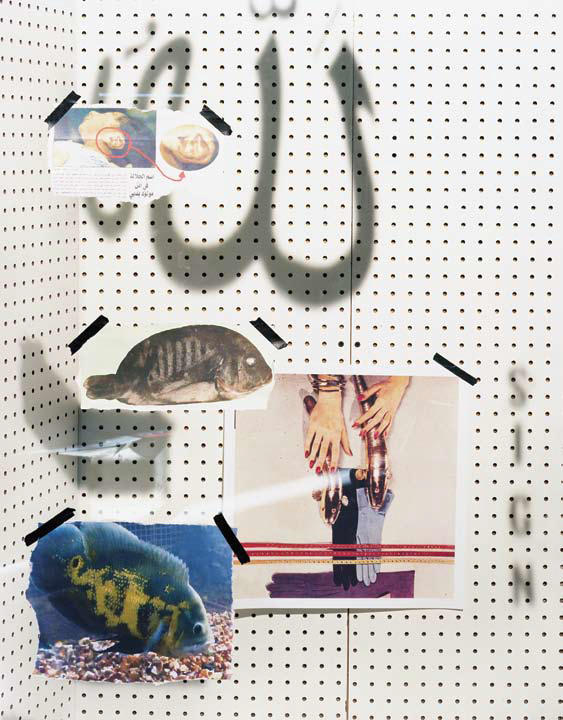
Five years ago my Aunt Berkah gave birth to a miracle baby. My infant cousin’s right ear arrived crumpled into a vaguely legible spelling of “Allah” in Arabic. The doctors and nurses were overjoyed, local newspapers picked up the story, and the whole community considered the baby a blessing. Aunt Berkah named her Aya, which means “Qur'anic verse” as well as “sign of Allah.”
Now more than ever, it seems, the divine is at work in the world. The evidence is everywhere, especially on the Internet and most especially in the amazing email-forwarding chains that can keep news of the miraculous alive nearly indefinitely. These phenomena are by no means limited to Muslims. There was the baby Jesus in the snail shell that was discovered in Tortuguero, Costa Rica, and subsequently put up for sale on eBay; and the “Virgin Stump” of Passaic, New Jersey, in which Mary’s visage, revealed in the grain of a newly exposed tree stump, was preserved, converted into a shrine for the devout and the curious. Christians have described the faith-quickening power of a two-inch-long Virgin composed of dark-chocolate drippings in Fountain Valley, California, and the face of Jesus himself in a twist of pasta on a billboard for Pizza Hut in Atlanta, Georgia. But Muslims have their own form of pareidolia, and, as befits a calligraphic culture with a somewhat vexed relationship to the visual, it is the text-image in which the divine manifests, the “word made flesh,” with Allah’s longhand the sought-after and perceived sign.
As it turns out, it’s fairly common for Allah to sign his creations. His mighty tag can be found in the froth of the sea and the pulp of the tomato, in the wool of the lamb and the rubber of the Nike. But one of Allah’s favorite mediums is certainly fish scale.
Allah-fish turn up with inspiring frequency in places like Jakarta, Manchester, and Dakar, on the fins and bellies of everyday fish, the words Allah or Mohammed beveled into the skin as some warped form of adaptive camouflage. For whatever reason, God signs “Allah” far more often than, say, “Al-Rahman” (Most Beneficent) or “Al-Mutakabbir” (the Tremendous) or “Al-Latif” (the Subtly Kind) or any of his ninety-six other, mostly more elaborate-looking, names.
The year 2006 was big for miracle fish. In February, an albino oscar fish, originally from Singapore, appeared in the tanks of a pet shop in Waterford, England, and quickly became a celebrity of sorts. “Allah on one side, Mohammed on the other,” as Mohammed Riaz-Shahid, from the Oasis Fast Food restaurant across the street, proclaimed. A sign from the heavens. Still, the young man who bought the fish, Naz Raja, insisted that he did it “because it was beautiful. It might be a sign, I suppose.” A miracle, the reporters pressed? “Kind of, yeah.”
Those minced words did not represent the views of the enthusiasts at the Allah-fish’s official website, where photos, testimonials, and videos were greeted with a generous outpouring of Sabhan'allah!s and Allahu Akbar!s. In June of the same year, a fisherman off the coast of Oman caught a rabbitfish signed by Allah. “I’m overjoyed at being the one to find this miracle in praise of Allah,” he told reporters. He sent the rabbitfish straight to the local taxidermist, where it would be preserved forever, Allah’s dead proof.
Just as Allah makes himself known in the skies and sea, so does Shaytan make waves in the aquatic underworld. Type “fish girl” into any search engine and you’ll find a grainy video of a girl who was turned into a fish after kicking the Qur'an. This sign is said to have originated in Dhidhdhoo, Maldives, though the origins of such viral videos are difficult to trace. In the footage, the fish-girl lies belly-up and vulnerable to the handheld camera that shakily follows the contours of her humanesque body, paying special attention to the orifices. The girl did not survive the transition, it seems. The corpse is the color of an artichoke heart, and its wispy fins look just like roasted leaves. She lies on a blanket-covered table with her rigor-mortised tail protruding over the edge. A Qur'anic cassette tape plays loudly in the background. We get a brief glimpse of a man bent over, examining the cursed girl. The video, which is variously titled “girl who Turn out to be a fish” and “Fish Girl: FULL STORY EXPALINED HERE!!!!” is like a lo-fi Islamic version of the Ray Santilli alien-autopsy video from the 1990s, right down to the bloated belly.
But the devil, it seems, is lazy, and his work is easily debunked. On further investigation, the fish-girl of Dhidhdhoo is actually just your run-of-the-mill guitarfish. In images and videos of these weird tropical fish, they flit about all slit-mouthed and crevice-eyed, and if you squint hard enough at its underside, a guitarfish could easily be mistaken for an anak durhaka (insolent child).
Luckily, since her miraculous birth, my cousin Aya’s ears have grown out. After the Allah stage, her ear unfurled into more of a classical cauliflower shape. And Aya has turned out to be quite the insolent child herself. All the early attention about her holiness seems to have spoiled her rotten. Aunt Berkah is just relieved that the ear’s divine message is gone; no more strangers begging to kiss or fondle her daughter anymore. Now that Aya is entering school, her ear is just an illegible echo, a smudge rather than a stamp or a squiggle, a sign no one would take for a wonder.